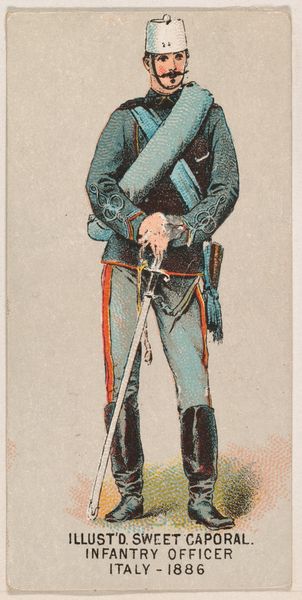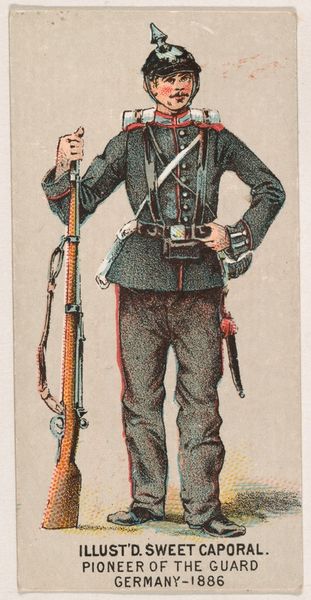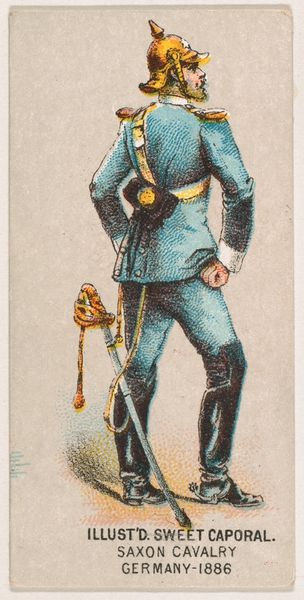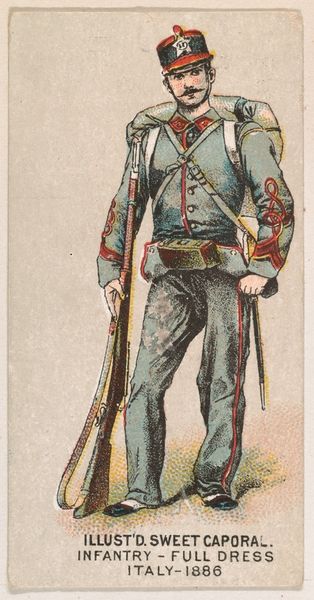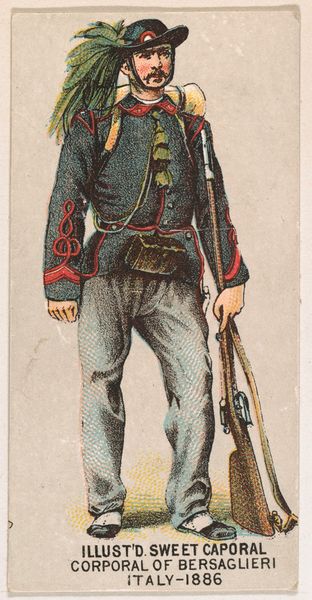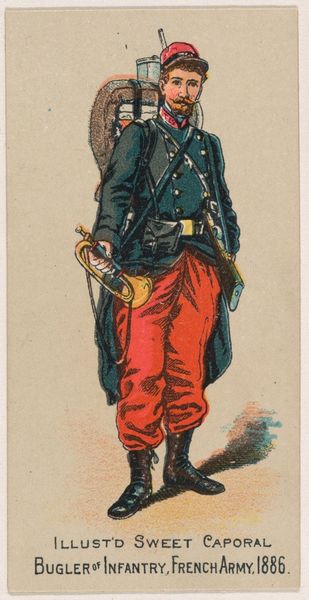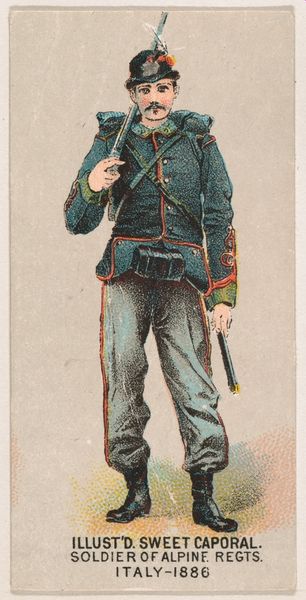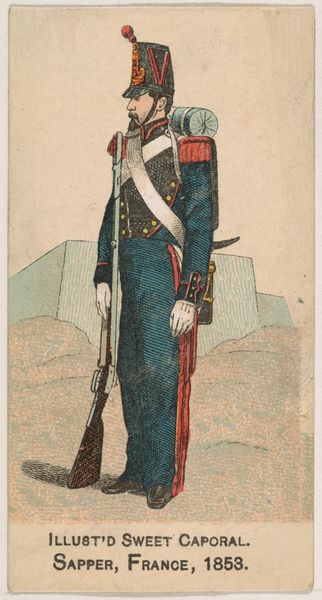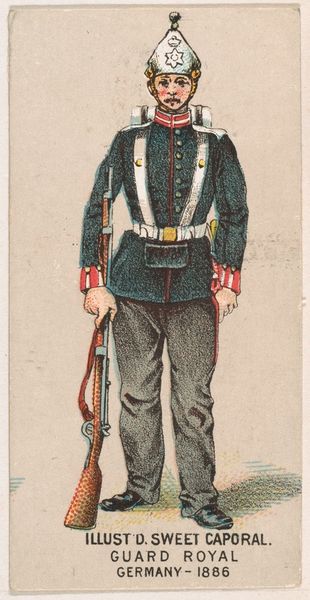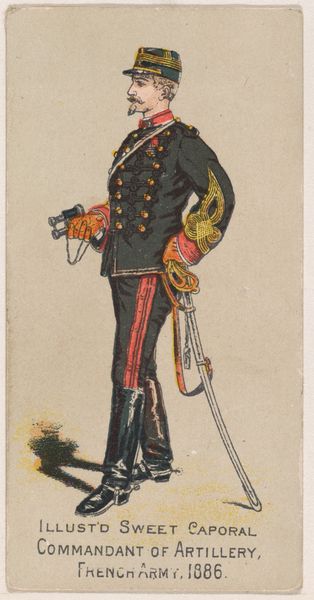
Hungarian Infantry, Austria, 1886, from the Military Series (N224) issued by Kinney Tobacco Company to promote Sweet Caporal Cigarettes 1888
0:00
0:00
drawing, print
#
portrait
#
drawing
# print
#
orientalism
#
men
#
sketchbook drawing
#
genre-painting
#
history-painting
Dimensions: Sheet: 2 3/4 × 1 1/2 in. (7 × 3.8 cm)
Copyright: Public Domain
Curator: This is "Hungarian Infantry, Austria, 1886" from the Military Series (N224). It was produced around 1888 by the Kinney Tobacco Company as a promotional item for Sweet Caporal Cigarettes. The piece is currently held at the Metropolitan Museum of Art. Editor: My first thought is just how detailed the rendering is for something designed as a giveaway! Look at the shading on the soldier's pack and uniform, the individual rivets on his boots. Curator: It's fascinating how commercial ephemera like cigarette cards reflect and participate in broader historical narratives. The Austro-Hungarian Empire was a complex, multicultural entity on the brink of collapse in this period, and these cards offered a curated, almost romanticized, view of its military. Editor: Absolutely. The materiality itself speaks volumes. This isn't high art commissioned for a gallery; it’s a mass-produced print, distributed with tobacco products, intended for everyday consumption. Who were the artists who rendered these images and what can that reveal about late 19th-century illustration work? Curator: That’s a critical question. And the idealized depiction is interesting too, there’s nothing here that speaks of the internal turmoil and ethnic tensions present at the time within the Hungarian part of the Empire. How did institutions reinforce particular political visions through popular culture? Editor: Right. And consider the politics embedded in promoting national pride through consumer goods. The tobacco industry played a significant role in shaping ideas about nationhood. How many young men looking at this thought it represented them and their position within the ranks? What ideas about military service were being passed on to a broad audience, mostly likely male? Curator: Exactly. Also, this card uses printmaking to create that impression of verisimilitude—linking this tradition with something like photorealism or propaganda—but does so with the expectation that it would be quickly consumed and discarded. The ephemeral nature creates its own historical fingerprint of industry and representation. Editor: This has definitely made me see how much even a simple tobacco card can reveal when you unpack its history. There's a complexity beneath the surface when we look at distribution, imagery, and audience expectations. Curator: Indeed, this seemingly simple image acts as a time capsule, revealing intertwined layers of production, consumption, and the propagation of a constructed historical narrative. A potent little piece of history.
Comments
No comments
Be the first to comment and join the conversation on the ultimate creative platform.
